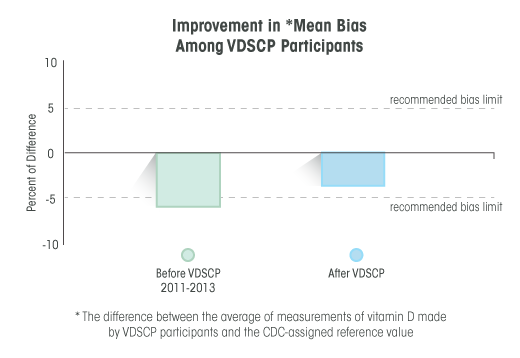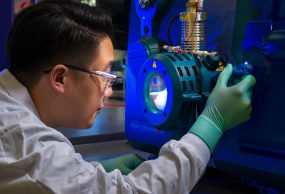Vitamin D Standardization-Certification Program
Osteoporosis and other bone diseases affect millions of U.S. residents and are a major cause of disability. Half of all women and as many as a quarter of men age 50 years and older will have an osteoporosis-related fracture in their lifetime.1
Vitamin D is an essential nutrient long-known for its role in maintaining bone health. People who are deficient in vitamin D are at higher risk for osteoporosis. Laboratory tests for vitamin D are used to determine a person’s vitamin D status, and to identify persons with vitamin D deficiency. These tests must be accurate to ensure correct diagnoses and treatment of patients with vitamin D deficiency.
The Centers for Disease Control and Prevention (CDC) improves the detection and diagnosis of bone diseases by ensuring that laboratory tests for vitamin D are accurate and reliable. CDC’s Vitamin D Reference Method Laboratory and the Vitamin D Standardization–Certification Program (VDSCP) work to
- provide reference measurements for total 25-hydroxyvitamin D (sum of 25-hydroxyvitamin D2 and 25-hydroxyvitamin D3),
- assess the accuracy and precision of vitamin D tests, and monitor their performance over time, and
- provide technical support to external quality assurance programs, proficiency testing programs, and research studies that ensure vitamin D tests are accurate and reliable.

1Office of Disease Prevention and Health Promotion. 2016. Arthritis, osteoporosis, and chronic back conditions. In: Healthy People 2020. Washington, DC [accessed 2017 May 18]. Available from https://www.healthypeople.gov/2020/topics-objectives/topic/Arthritis-Osteoporosis-and-Chronic-Back-Conditions.
